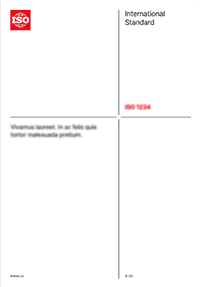Тезис
This International Standard specifies the mapping functions for a pair of on-demand inter-PINX connections using a circuit
mode basic service and the supplementary service User-to-User Signalling (service 3) of a public ISDN at the same time.
In order to connect a Private Integrated Services Network Exchange (PINX) to another PINX, mapping functions are required
to adapt the specific interfaces at the C reference point to the application at the Q reference point. As such, mapping functions
provide for physical adaptation to the interface at the C reference point. Mapping functions also provide for the mapping of
user channels and signalling information at the Q reference point to the appropriate channels or timeslots at the C reference
point.
The C and Q reference points are defined in ISO/IEC 11579-1.
At the Q reference point the mappings provide a 64 kbit/s service for user channels and a packet mode service for the
signalling channel. Bearer conditioning is outside the scope of this International Standard, except for providing the layer 2 for
the signalling channel at the Q reference point.
Scenario management is outside the scope of this International Standard.
This International Standard is applicable to PINXs which can be interconnected to form a Private Integrated Services Network
(PISN) and which support signalling protocols at the Q reference point.
Общая информация
-
Текущий статус: ОпубликованоДата публикации: 2000-09Этап: Рассылка краткого отчета о пересмотре [90.60]
-
Версия: 1
-
Технический комитет :ISO/IEC JTC 1/SC 6ICS :33.040.35
- RSS обновления
Жизненный цикл
-
Сейчас
ОпубликованоISO/IEC 17309:2000
Стандарт, который пересматривается каждые 5 лет
Этап: 90.60 (Hа стадии пересмотра)-
00
Предварительная стадия
-
10
Стадия, связанная с внесением предложения
-
20
Подготовительная стадия
-
30
Стадия, связанная с подготовкой проекта комитета
-
40
Стадия, связанная с рассмотрением проекта международного стандарта
-
50
Стадия, на которой осуществляется принятие стандарта
-
60
Стадия, на которой осуществляется публикация
-
90
Стадия пересмотра
-
95
Стадия, на которой осуществляется отмена стандарта
-
00


